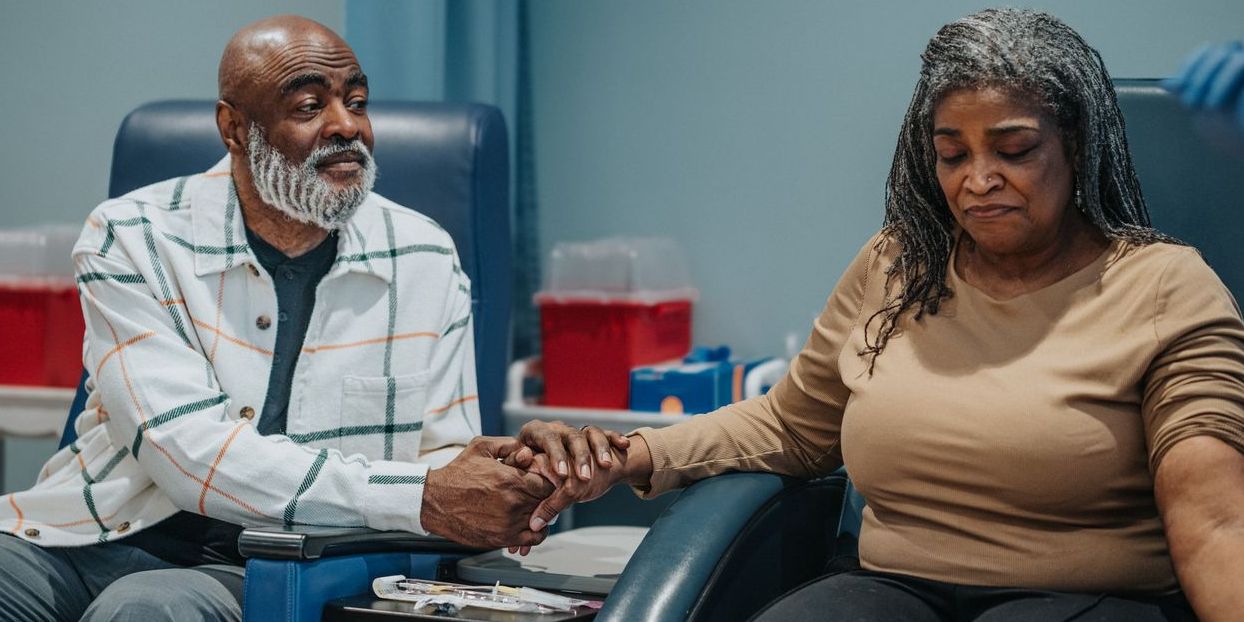Durvalumab and olaparib added to standard of care improved progression-free survival compared with those who received the standard of care only.
Maintenance therapy with the PARP inhibitor olaparib has improved outcomes of first-line treatment of advanced ovarian cancer. However, unmet needs remain, especially in patient subgroups with non-BRCA variants. Recently, the phase 2 MEDIOLA study (NCT02734004) showed promising clinical activity of durvalumab/bevacizumab/olaparib maintenance treatment in patients with non-BRCA variant.
The phase 3 DUO-O study (NCT03737643) evaluates first-line treatment with chemotherapy/bevacizumab/durvalumab followed by bevacizumab/durvalumab/olaparib maintenance therapy in patients with newly diagnosed non-BRCA variant advanced ovarian cancer. Philipp Harter, MD, PhD, presented the results of the first, pre-planned interim analysis at the 2023 ASCO Annual Meeting, held June 2-6 in Chicago.
A total of 1,120 participants (FIGO stage III–IV, non-BRCA variant) were randomly assigned 1:1:1. Arm A: chemotherapy/bevacizumab (6 cycles) followed by bevacizumab (total of 15 months). Arm B: chemotherapy/bevacizumab/durvalumab followed by bevacizumab/durvalumab (24 months). Arm C: chemotherapy/bevacizumab/durvalumab followed by bevacizumab/durvalumab/olaparib (24 months). The primary endpoint was progression-free survival (PFS) in arm 3 versus arm 1 (in HRD-positive and ITT, respectively).
In the HRD-positive population, the median PFS was significantly higher in arm 3 (37.3 months) compared with arm 1 (23.0 months; HR, 0.49; P<0.0001). In the HRD-negative population, the median PFS was also significantly higher in arm 3 (20.9 months) compared with arm 1 (17.4 months; HR, 0.68; P<0.0001). Moreover, the median PFS in the ITT population was higher in arm 3 (24.2 months) versus arm 1 (19.3 months; HR, 0.63; P<0.0001). The PFS benefit in arm 3 versus arm 1 was not affected by age, performance status, stage of disease, or PD-L1 expression. A numeric but not statistical improvement in median PFS was observed in arm 2 (ITT population) versus arm 1: 20.6 versus 19.3 months (HR, 0.87; P=0.13).
All treatments were well tolerated; discontinuation due to adverse events was more often observed in arm 3 compared with arm 1: 35% versus 20% overall; 26% versus 13% during maintenance treatment.
“DUO-O met its primary endpoint, demonstrating statistically significant and clinically meaningful improvement in PFS with first-line chemotherapy/bevacizumab/durvalumab followed by maintenance bevacizumab/durvalumab/olaparib compared with chemotherapy/bevacizumab followed by maintenance bevacizumab,” concluded Dr. Harter.
Copyright ©2023 Medicom Medical Publishers


















Create Post
Twitter/X Preview
Logout